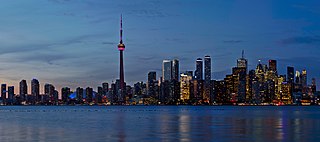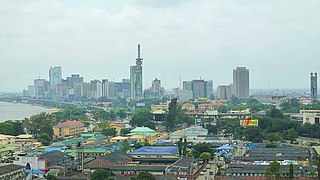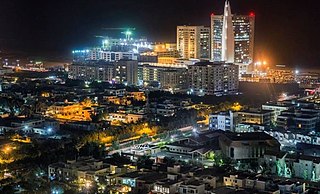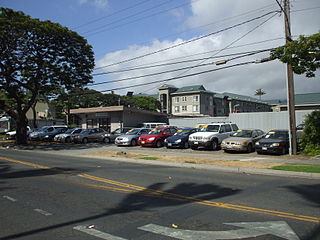This article is being considered for deletion in accordance with Wikipedia's deletion policy. Please share your thoughts on the matter at this article's deletion discussion page. |
The following is a list of countries by car imports.
This article is being considered for deletion in accordance with Wikipedia's deletion policy. Please share your thoughts on the matter at this article's deletion discussion page. |
The following is a list of countries by car imports.
Data is for 2021, in billions of United States dollars. The top fifteen countries are listed: [1]
| # | Country | Value |
|---|---|---|
| 1 | 148.1 | |
| 2 | 66.8 | |
| 3 | 48.8 | |
| 4 | 40.2 | |
| 5 | 35.8 | |
| 6 | 31.9 | |
| 7 | 27.8 | |
| 8 | 25 | |
| 9 | 17.6 | |
| 10 | 15.3 | |
| 11 | 12.9 | |
| 12 | 11.9 | |
| 13 | 11.7 | |
| 14 | 11.6 | |
| 15 | 10.4 |

The economy of Canada is a highly developed mixed economy. It is the 9th-largest GDP by nominal and 15th-largest GDP by PPP in the world. As with other developed nations, the country's economy is dominated by the service industry which employs about three quarters of Canadians. It has the world's third-largest proven oil reserves and is the fourth-largest exporter of crude oil. It is also the fifth-largest exporter of natural gas.

The economy of Indonesia is the largest in Southeast Asia and is one of the emerging market economies. As a middle-income country and member of the G20, Indonesia is classified as a newly industrialized country. It is the 16th largest economy in the world by nominal GDP and the 7th largest in terms of GDP (PPP). Estimated at US$40 billion in 2019, Indonesia's Internet economy is expected to cross the US$130 billion mark by 2025. Indonesia depends on the domestic market and government budget spending and its ownership of state-owned enterprises. The administration of prices of a range of basic goods also plays a significant role in Indonesia's market economy. However, since the 1990s, the majority of the economy has been controlled by individual Indonesians and foreign companies.

The economy of Mongolia has traditionally been based on agriculture and livestock. Mongolia also has extensive mineral deposits: copper, coal, molybdenum, tin, tungsten, and gold account for a large part of industrial production. Soviet assistance, at its height one-third of Gross domestic product (GDP), disappeared almost overnight in 1990–91, in the time of the collapse of the Soviet Union. Mongolia was driven into deep recession.

The economy of Nigeria is a middle-income, mixed economy and emerging market with expanding manufacturing, financial, service, communications, technology, and entertainment sectors. It is ranked as the 31st-largest economy in the world in terms of nominal GDP, the largest in Africa and the 27th-largest in terms of purchasing power parity.

The economy of Pakistan is classified as a low income developing economy. It is the 23rd-largest in terms of GDP based on purchasing power parity (PPP). In 2021, the country had a population of 227 million people. As of FY22, the nominal GDP of Pakistan stands at US$376 billion with a nominal GDP per capita of US$1,658 (177th); its GDP based on PPP stands at US$1.512 trillion with a GDP (PPP) per capita of US$6,662 (168th).

The economy of Romania is a complex high-income economy with a skilled labour force, ranked 12th in the European Union by total nominal GDP and 7th largest when adjusted by purchasing power parity. The World Bank notes that Romania’s efforts are focused on accelerating structural reforms and strengthening institutions in order to further converge with the European Union. The country's economic growth has been one of the highest in the EU since 2010, with the first half of 2022 seeing an unexpected 5.8% increase.

The economy of Switzerland is one of the world's most advanced and highly-developed mixed economy. The service sector and Political stability and Economic stability has come to play a significant economic role, particularly the Swiss banking industry and tourism. The economy of Switzerland has ranked first in the world since 2015 on the Global Innovation Index and third in the 2020 Global Competitiveness Report. According to United Nations data for 2016, Switzerland is the third richest landlocked country in the world after Liechtenstein and Luxembourg. Together with the latter and Norway, they are the only three countries in the world with a GDP per capita (nominal) above US$90,000 that are neither island nations nor ministates.
A grey market or dark market is the trade of a commodity through distribution channels that are not authorized by the original manufacturer or trade mark proprietor. Grey market products are products traded outside the authorized manufacturer's channel.

Non-tariff barriers to trade are trade barriers that restrict imports or exports of goods or services through mechanisms other than the simple imposition of tariffs.

A voluntary export restraint (VER) or voluntary export restriction is a measure by which the government or an industry in the importing country arranges with the government or the competing industry in the exporting country for a restriction on the volume of the latter's exports of one or more products.

A used car, a pre-owned vehicle, or a secondhand car, is a vehicle that has previously had one or more retail owners. Used cars are sold through a variety of outlets, including franchise and independent car dealers, rental car companies, buy here pay here dealerships, leasing offices, auctions, and private party sales. Some car retailers offer "no-haggle prices," "certified" used cars, and extended service plans or warranties.

Since the end of apartheid, foreign trade in South Africa has increased, following the lifting of several sanctions and boycotts which were imposed as a means of ending apartheid.

Relations between the European Union (EU) and Japan date back to 1959. They have a strong trade relationship, particularly in investment flows.

World energy supply and consumption is global production and preparation of fuel, generation of electricity, energy transport, and energy consumption. It is a basic part of economic activity. It includes heat, but not energy from food.
Following Russia's invasion of Ukraine beginning on 24 February 2022, the United States, the European Union, and other Western countries introduced or significantly expanded sanctions covering Russian President Vladimir Putin and other government members, and banned "selected Russian banks" from using the SWIFT international payments system, triggering the 2022 Russian financial crisis and a massive international boycott of Russia and Belarus, which supports the invasion.